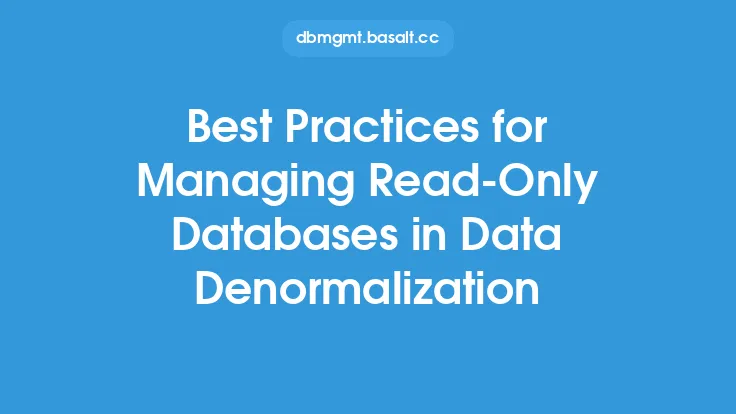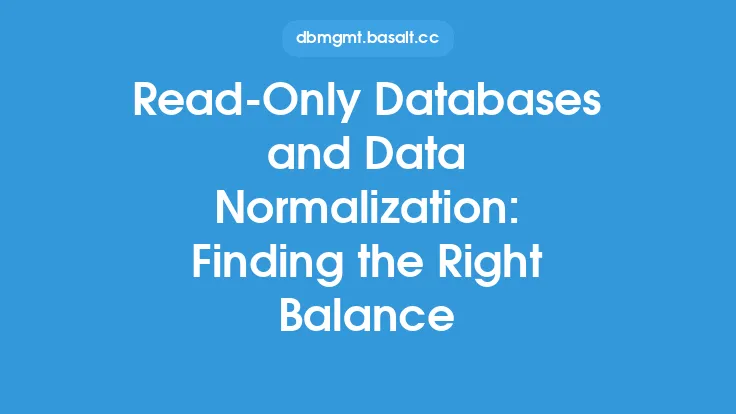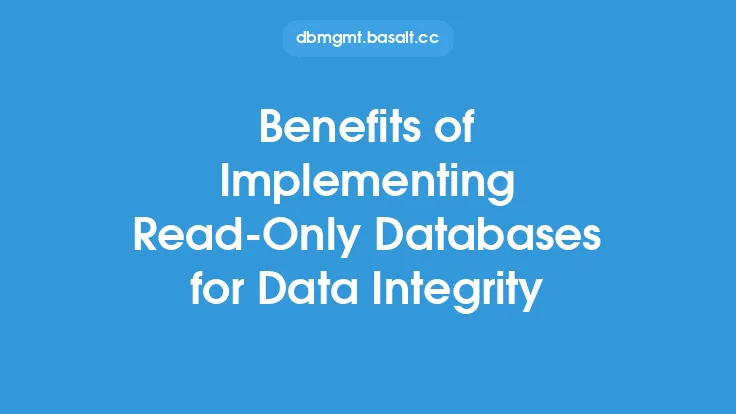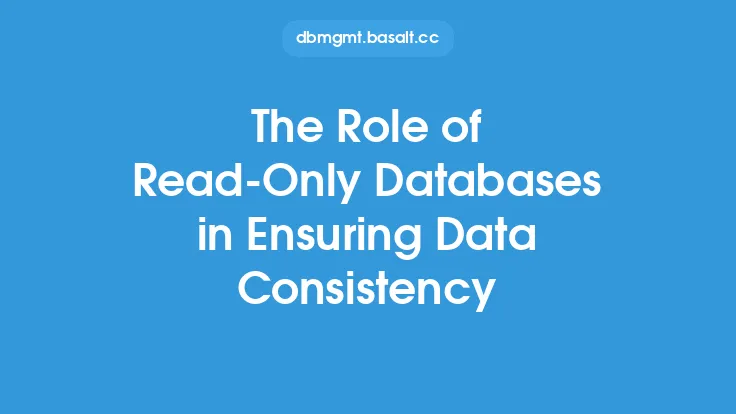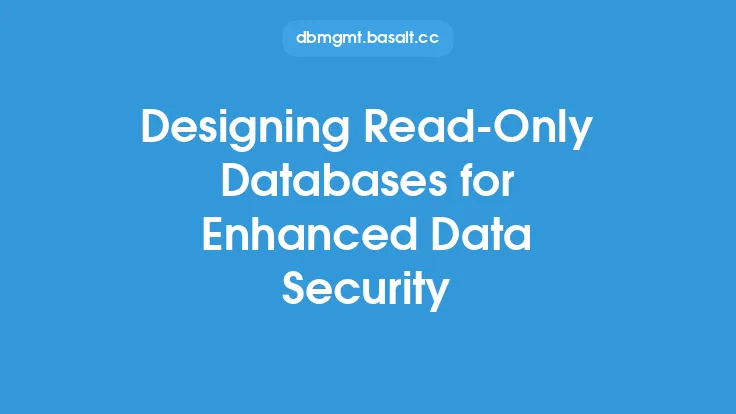In the realm of data denormalization, read-only databases play a crucial role in optimizing data retrieval and improving overall system performance. Data denormalization is a technique used to improve the read performance of a database by reducing the number of joins required to retrieve data. This is achieved by storing redundant data, which can lead to inconsistencies and data integrity issues if not managed properly. Read-only databases, in this context, provide a solution to these issues by ensuring that data is consistent and up-to-date, while also providing fast data retrieval.
Introduction to Read-Only Databases
A read-only database is a type of database that allows only read operations, such as SELECT statements, and does not support write operations, such as INSERT, UPDATE, or DELETE statements. This means that data in a read-only database is static and cannot be modified once it is written. Read-only databases are often used in scenarios where data is relatively static and does not change frequently, such as in data warehousing, reporting, and analytics applications.
Architecture of Read-Only Databases
The architecture of a read-only database typically consists of a single node or a cluster of nodes that store the database files. The database files are usually stored on a file system or a storage area network (SAN), and are accessed by the database engine through a standardized interface. The database engine is responsible for managing the database files, handling queries, and providing data to applications. In a read-only database, the database engine is optimized for read performance, with features such as caching, indexing, and query optimization.
Data Denormalization in Read-Only Databases
Data denormalization is a technique used to improve the read performance of a database by reducing the number of joins required to retrieve data. In a read-only database, data denormalization is used to store redundant data, which can lead to faster query performance. However, data denormalization can also lead to data inconsistencies and integrity issues if not managed properly. To mitigate these issues, read-only databases use techniques such as data replication, data caching, and data validation to ensure that data is consistent and up-to-date.
Data Replication in Read-Only Databases
Data replication is a technique used to maintain multiple copies of data in a read-only database. This is done to ensure that data is available and consistent across all nodes in the database cluster. Data replication can be done using various techniques, such as master-slave replication, peer-to-peer replication, or multi-master replication. In a read-only database, data replication is used to ensure that data is consistent and up-to-date, even in the event of node failures or network partitions.
Data Caching in Read-Only Databases
Data caching is a technique used to improve the performance of a read-only database by storing frequently accessed data in memory. This allows the database engine to retrieve data quickly, without having to access the disk storage. Data caching can be done using various techniques, such as page caching, row caching, or result caching. In a read-only database, data caching is used to improve query performance, reduce latency, and increase throughput.
Query Optimization in Read-Only Databases
Query optimization is a technique used to improve the performance of a read-only database by optimizing queries for faster execution. This can be done using various techniques, such as query rewriting, index optimization, and statistics gathering. In a read-only database, query optimization is used to improve query performance, reduce latency, and increase throughput. The database engine can use various algorithms, such as cost-based optimization or rule-based optimization, to optimize queries for faster execution.
Use Cases for Read-Only Databases
Read-only databases are used in various scenarios, such as data warehousing, reporting, and analytics applications. They are also used in scenarios where data is relatively static and does not change frequently, such as in e-commerce applications, content management systems, and social media platforms. Read-only databases are also used in big data analytics, where large amounts of data need to be processed and analyzed quickly.
Conclusion
In conclusion, read-only databases play a crucial role in optimizing data retrieval and improving overall system performance in data denormalization scenarios. By providing a static and consistent view of data, read-only databases can improve query performance, reduce latency, and increase throughput. The architecture of a read-only database, data denormalization, data replication, data caching, and query optimization are all important aspects of read-only databases that need to be considered when designing and implementing a read-only database. By understanding these concepts, developers and database administrators can design and implement read-only databases that meet the performance and scalability requirements of their applications.
